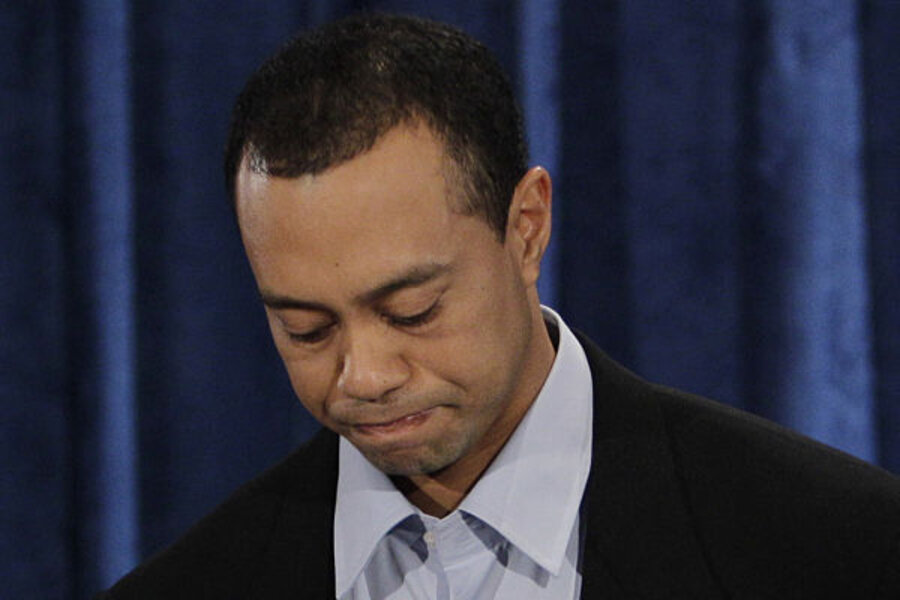Tiger Woods apology strategy: Heal the Tiger, then the business
Loading...
Superstars like Tiger Woods are big corporations. But they're special entities, where some of the ordinary rules of business don't apply.
Superstars can't resign like regular CEOs do when they stumble in their personal lives. They can't pledge to rigorously improve procedures or focus on quality. The health of their business depends entirely on the quality of their image.
Similarly, when they attempt to repair that image – as Tiger Inc. officially began Friday – the rules are backwards. To save their business, superstars have to forget the business and save themselves.
In the script of his televised apology, Woods began to do just that. He focused on his personal missteps and rehabilitation. The word "golf" appeared only three times in his 15-minute speech.
He surprised the golf world by saying that he was not sure when he would come back to the sport. "I do plan to return to golf one day, I just don't know when that day will be," he said, near the end of the speech.
By putting off golf and acknowledging that he spent 45 days in therapy "receiving guidance for the issues I'm facing," Woods put first things first. "I have a long way to go," he added.
Any celebrity who has gone through that process under extreme media scrutiny knows how hard and uncertain public redemption is. Think Martha Stewart. Or Barry Bonds.
"I felt that I had worked hard my entire life and deserved to enjoy all the temptations around me. I felt I was entitled," Woods said Friday. "I was wrong. I was foolish. I don't get to play by different rules."
It's easy to be cynical about this. The work of superstar redemption is every bit as scripted as a feature film or political campaign. Tiger Inc. undoubtedly shelled out big bucks to top-notch firms to plot this comeback.
And as a pitchman for his own brand, Woods has some work to do.
"It looked too aloof, too contrived," says Gene Grabowski, who heads the crisis practice of Levick Strategic Communications, a communications consulting firm based in Washington, D.C. "He needs to somehow connect with fans and the media."
Yet behind the trophies, the riches, the public glare, and all the rest of it, I think there is a man struggling for personal atonement.
If he can heal that Tiger, Tiger Inc. will roar once more.





